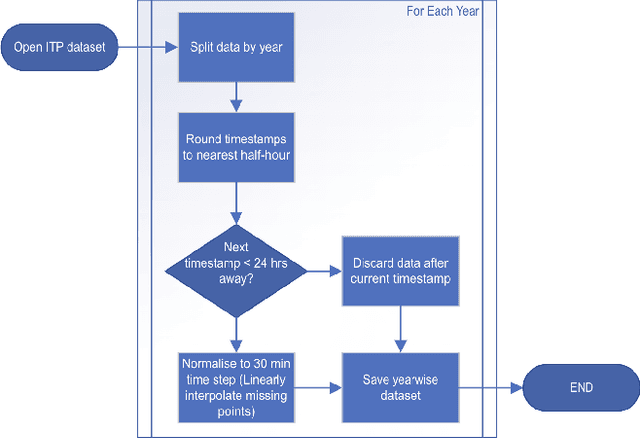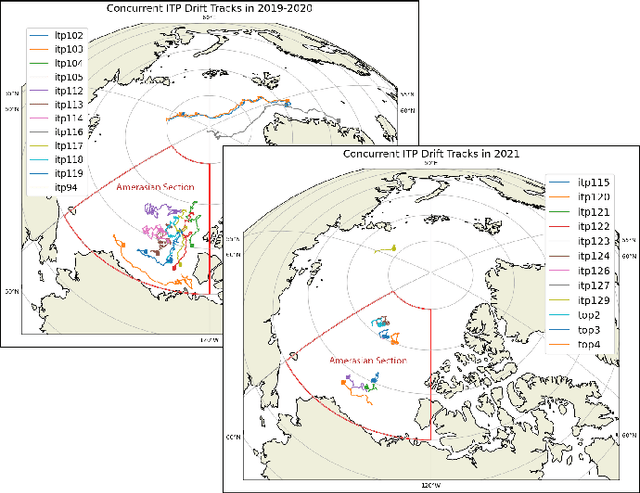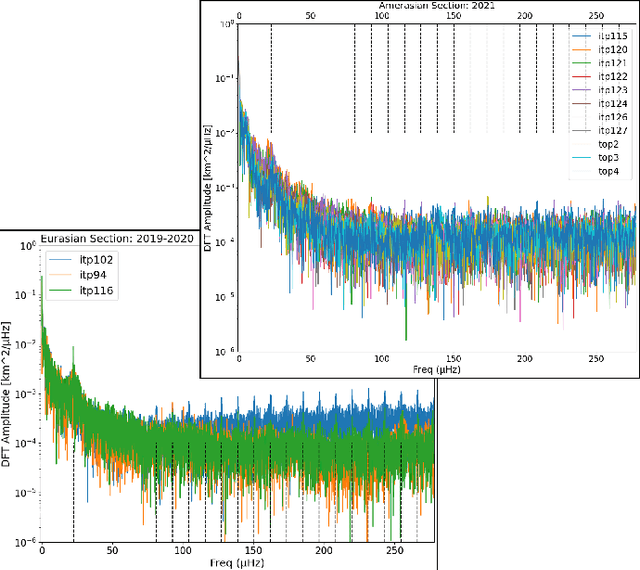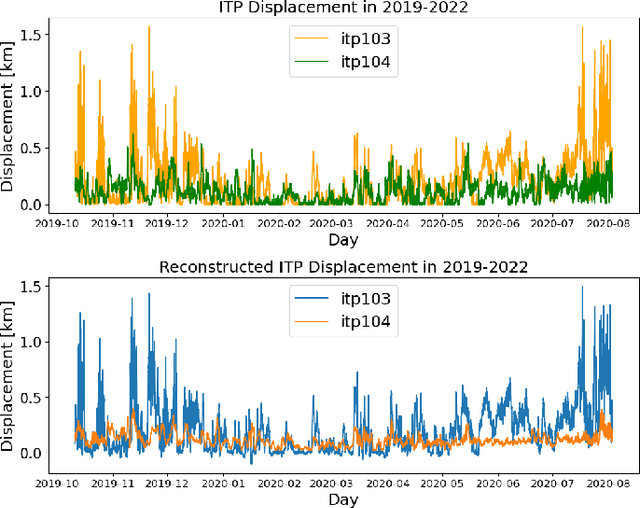Analysis of Arctic Buoy Dynamics using the Discrete Fourier Transform and Principal Component Analysis
Paper and Code
Jul 20, 2023



Sea-Ice drift affects various global processes including the air-sea-ice energy system, numerical ocean modelling, and maritime activity in the polar regions. Drift has been investigated via various technologies ranging from satellite based systems to ship or ice-borne processes. This paper analyses the dynamics of sea-drift in the Arctic over 2019-2021 by Fourier Analysis and Principal Component Analysis of displacement data generated from the drift tracks of Ice-Tethered Profilers. We show that the frequency characteristics of drift support the notion that it is a function of both slowly varying processes, and higher frequency, random, forcing. In addition, we show that displacement data features high correlation between deployment locations and, consequently, suggest that there is scope for the optimisation of profiler deployment locations and for the reduction in number of instruments required to capture the displacement characteristics of drift.
 Add to Chrome
Add to Chrome Add to Firefox
Add to Firefox Add to Edge
Add to Edge